In addition to reading and researching items in their fields, the most well-known scientists take the time to read books about every subject. A curious mind and thirst for knowledge are two traits that make each person a unique individual. Throughout the chaos of everyday life, people may find an excellent book to be a form of relaxation. It can also expand their understanding of a particular topic. There are paper books and also electronic formats. Some readers prefer holding a book in their hands and turning the pages. Others may be satisfied with downloading a new book to their tablet.
Finding a book that is interesting, engaging, and fact-filled can be challenging. However, once you have found it, you’re not going to want to put it down. Scientists were asked to choose their favorite books. The topics covered a wide range from high fantasy to the legacy of autism. Some scientists prefer to dive into books that further expand their current knowledge. They like to read books containing new information unfamiliar to them. Other scientists, such as Jane Goodall, prefer to choose a fiction novel that dives into a different world for a little time. Whichever you prefer, many readers would argue that you can never have too many books. Read on to find out the top books that scientists recommended as must-reads for others.
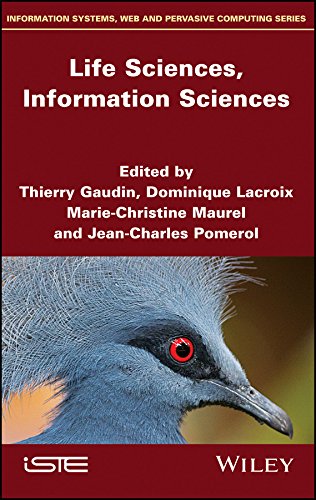
25. Life Sciences, Information Sciences explores the complex relation of life and information in the functioning of genes.
This highly recommended book presents a general overview of the thought and research at the crossroads of life sciences and information sciences. The contributors explore life and information, both equally important. There are a few parts of the book. The first part of the book explores the relationship between life and the functioning of genes. This concept covers both the phylogenetic and ontogenetic levels. DNA can be tricky. In this piece of literature, the authors explained the understanding of DNA as code from a range of different perspectives.
In the second part of the book, there is more information on how life and DNA contribute to individualization. Life Sciences, Information Sciences has research from a few perspectives, including philosophical and ethological. The four authors come from different backgrounds. Thierry Gaudin is an engineer while Dominique Lacroix is a web publisher. Marie-Christine Maurel is a professor, and Jean-Charles Pomerol is a specialist in decision support systems. Their varying backgrounds allow them to offer different perspectives to explain the relationships between information and life.
Click Here to Buy This Book!

24. There are many technical challenges associated with hydrogen storage. However, people still think hydrogen can be a primary source of energy in the years to come.
Power plants based on the combustion of fossil fuel resources or nuclear power plants are not suitable to provide energy in the future. There are significant disadvantages and dangers associated with those technologies that are considered outdated. People think hydrogen is the primary energy source of tomorrow. It emits zero emissions; furthermore, scientists regard it as an extremely efficient power producer. The storage of energy by consuming and producing hydrogen is an extremely appealing option. It can be suitable for storing energy for things such as transportation and bulk energy.
The physical restrictions of high-pressure hydrogen storage is an ongoing task with multidisciplinary aspects. This idea combines chemistry, physics, material science, and engineering. Thomas Zell and Robert Langer explain a wide variety of chemical elements of chemical storage. The two co-authors touch on the benefits and attractiveness of hydrogen. They also discuss global climate change issues and carbon dioxide isolation problems. Are you interested in where our energy will come from in the future? This book can offer insight into how scientists review hydrogen as a viable option.
Click Here to Buy This Book!

23. The Immoralist is a novel that examines whether self-concern is superseded by moral principles based on empathy for others.
Recommended by famous astronomer Carl Sagan, The Immoralist appeared on his college reading list. The artistic tale tells the story of Michel, who marries a family friend to cheer his father and provide for his own needs. The couple travels to North Africa, where Michel contracts tuberculosis. While recovering in North Africa, Michael meets a young Arab boy whose radiant health and beauty captive him. An awakening for him both sexually and morally, Michel discovers new freedom in seeking to live according to his desires. Back in France, Michel’s friend urges him to ignore convention and indulge his passions.
When his pregnant wife, Marceline, develops her own tuberculosis case, they travel south for her health. However, Michel neglects Marceline to gratify his desires. Marceline eventually suffers a miscarriage and later dies as Michel watches. Andre Gide earned the Nobel Prize for literature in 1947 for his artistic tale. Gide has often been considered a humanist. A humanist has four leading characteristics. These are curiosity, a free mind, belief in good taste, and a belief in the human race. All four of these traits are present in Gide.
Click Here to Buy This Book!
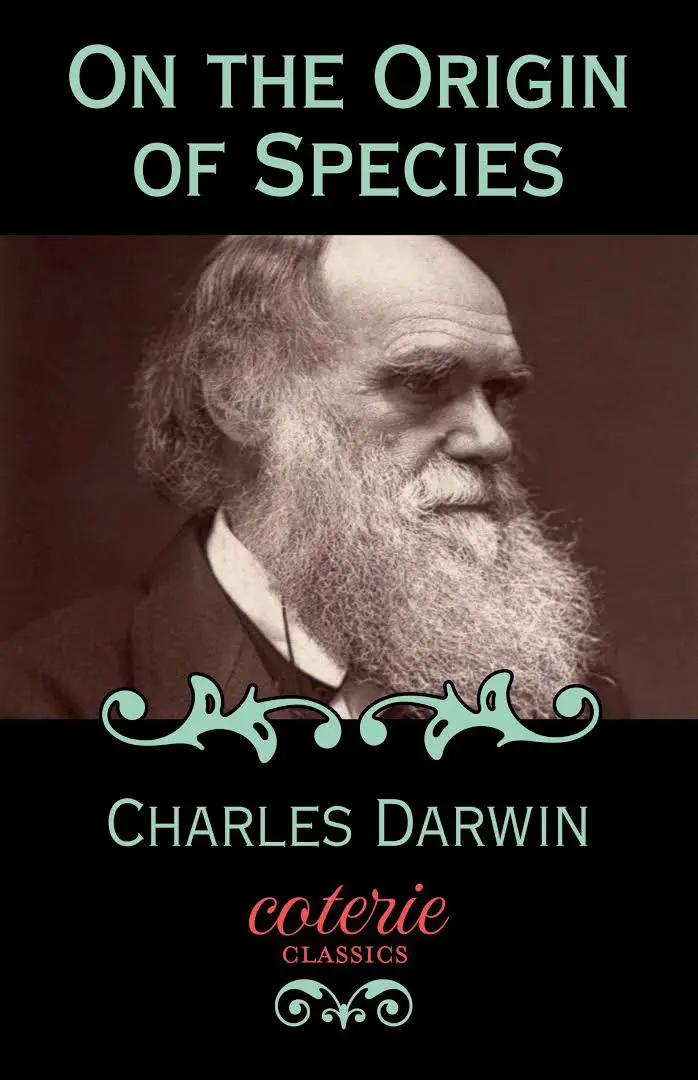
22. Darwin based his theory on the notion of variation that argues that numerous traits and adaptations differentiate species from each other. The approach also explains how species have evolved.
On the Origin of Species laid the framework for the field of evolutionary biology. Variations in organisms are apparent both within domesticated species and within species throughout the natural world. Heredity is the mechanism that perpetuates variations. The characteristics passed from parents to offspring are how they allow species to adapt and survive in the world. Natural selection is a crucial component of Darwin’s theory.
It explains the relationship between variation and the eventual evolution of a species. As a result of limited food, water, and shelter, the species must engage in a struggle for existence, ultimately creating competition for survival. The organisms that have advantageous variations will be more likely to survive. Through heredity, parents pass these beneficial variations to the offspring. Eventually, natural selection will allow those species that have best adapted to their environments to survive and prosper.
In contrast, the species without these advantageous adaptations will lose the struggle for existence. This book helps readers understand evolution and natural selection, as described by Darwin himself. The theory of advantageous variations and how it has impacted development is fascinating.
Click Here to Buy This Book!
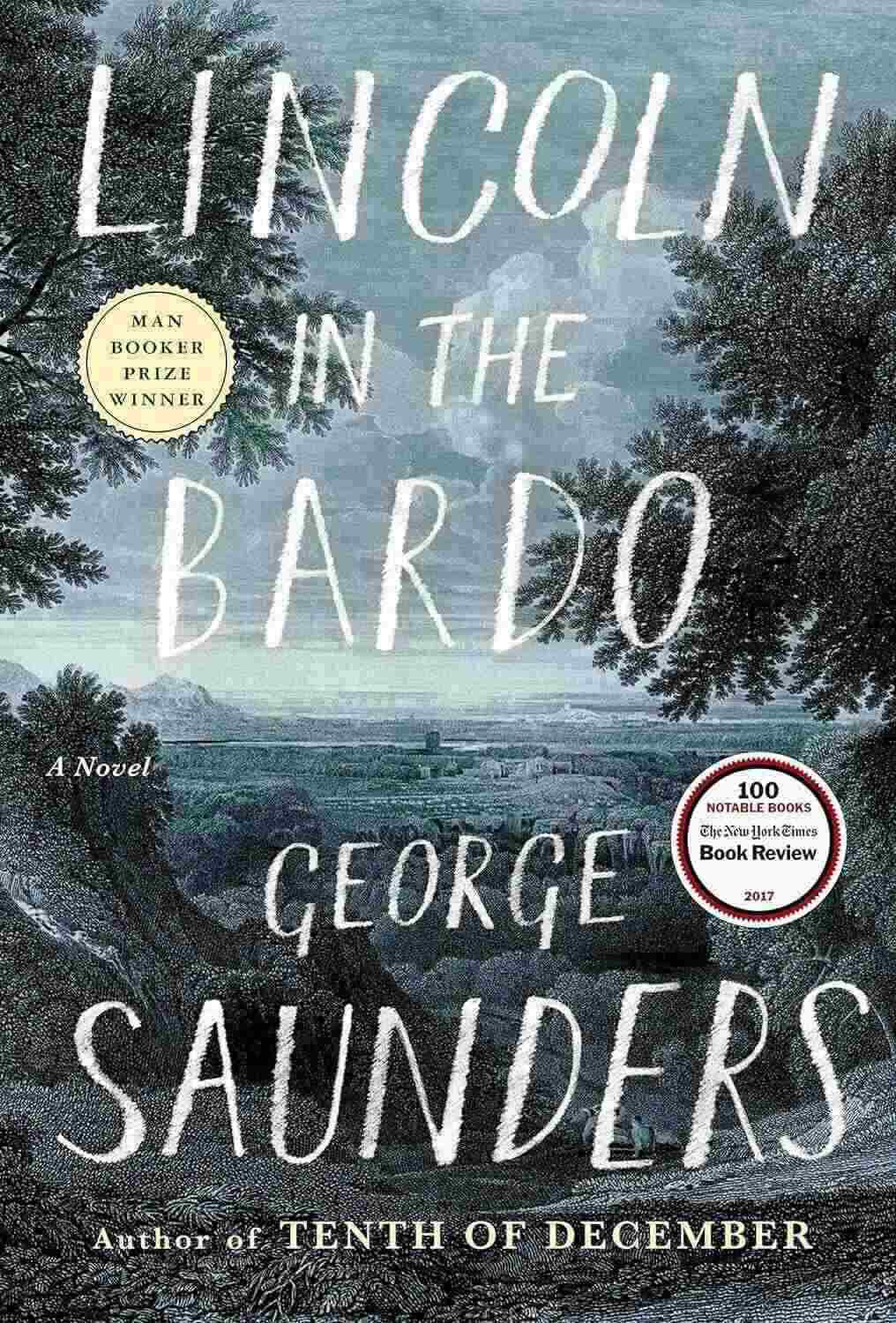
21. The novel Lincoln in the Bardo won the 2018 Man Booker Prize. The author wrote about the true story of the death of William Lincoln, the son of President Abraham Lincoln.
In 1862, William “Willie” Lincoln died of typhoid fever at the young age of 11. The book opens in the bardo, which is the intermediate state between life and the afterlife. Through the use of real and invented historical sources, the book covers the story of Willie’s death. The doctors believed that Willie was sick with just a cold; moreover, they expected him to make a full recovery. With this information, Abraham Lincoln and Mary Lincoln proceeded with the state dinner they had planned.
The President and First Lady entertained many vital politicians, diplomats, and military officers while Willie laid ill in bed. He died not long after, as it turned out he was sick with typhoid fever. He is greeted in the bardo by Hans Vollman, a deceased printer, and Roger Bevins III, a young man. Everyone that meets Willie is someone who has died and is buried in the same cemetery as Willie. They believe they are not dead but rather sick. The novel beautifully blends historical facts with elements of fantasy.
Click Here to Buy This Book!
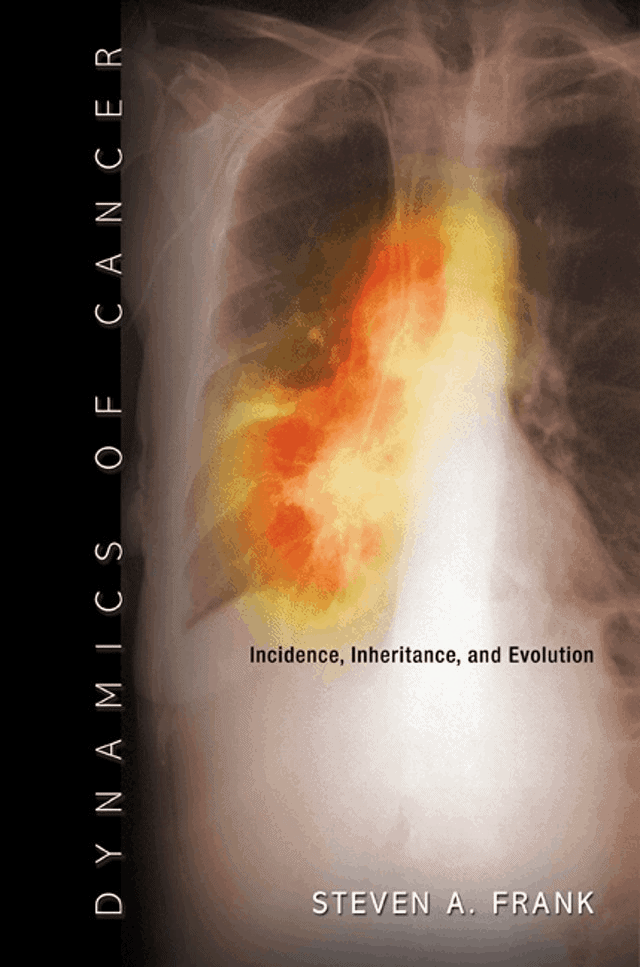
20. The onset of cancer is one of the most fundamental problems in modern biology. In Dynamics of Cancer, readers will get a unique framework for understanding cancer causes that increase with age.
Steven Frank produced the first comprehensive analysis of how specific genetics and environmental factors influence the age of cancer onset. Frank unifies molecular, demographic, and evolutionary levels of analysis. Using quantitative methods and multistage breakdowns, he can tackle some of the issues in cancer biology and aging. For instance, how the rate of incidence of lung cancer decreases once people quit smoking. Steven Frank looks at the distinction between the dosage of the chemical carcinogen and the time of exposure.
Furthermore, how inherited genetic variation impacts the likelihood of cancer. The book is the only one that presents a full analysis of the age of cancer onset. It can be an excellent teaching tool and a source of ideas for both new and experienced researchers. If we can understand the likelihood of diseases that increase with age, we can better understand the human life cycle. For anyone interested in aging, the Dynamics of Cancer provides new insight into disease progression. You can learn about the inheritance of predisposition to disease. Another topic is how evolutionary processes have helped shape organismal design.
Click Here to Buy This Book!

19. The Green Marble examines the Earth’s past, contemporary human disruption, and prospects for global environmental governance. The need for worldwide effort is increasingly urgent.
In this book, David Turner offers readers an overview of global environmental change in addition to the synthesis of research from the fast-evolving fields. He focuses on the totality of life on Earth. That includes its influence on geologic history, the sensitivity to human impact, and the potential role in improving climate change. The Green Marble describes various scenarios that explore the effects of greenhouse gas emissions and economic globalization. David Turner provides readers ideas from the geosciences and the social sciences to demonstrate how humans have contributed to the current, dangerous trajectory.
The book also addresses how humans might want to pull back from choices that could have significant environmental change. The Green Marble creates a framework for a better understanding of the complicated relationship between human decisions and the global environment. For anyone interested in humanity’s current predicaments and how we can help, this book is ideal for you. It offers much insight into global environmental change and a summary of research and ideas to expand your knowledge.
Click Here to Buy This Book!
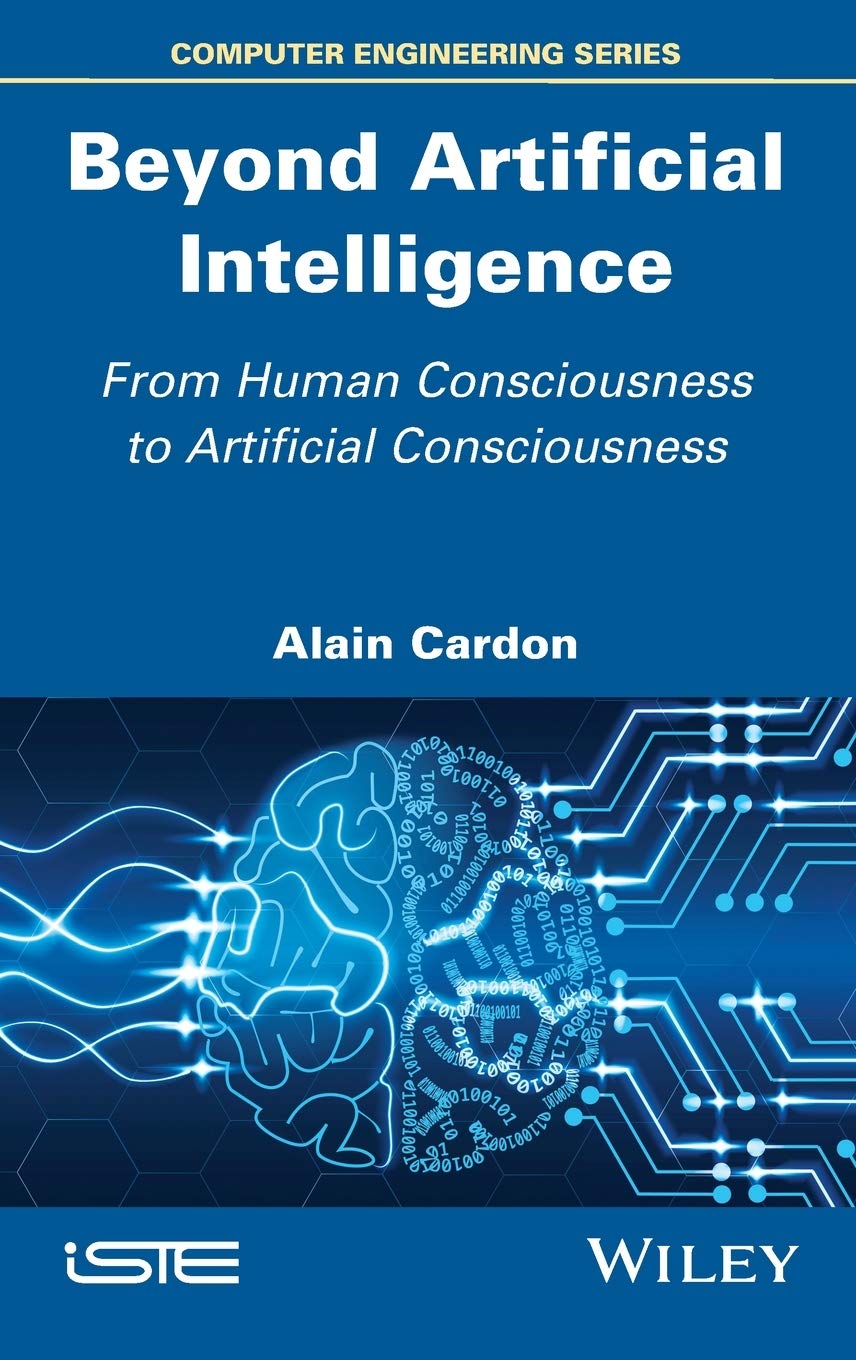
18. Alain Cardon wrote Beyond Artificial Intelligence in 2018. The book creates thoughts and questions to the organized approach of rising and falling.
Beyond Artificial Intelligence is a fascinating read that focuses on the human psychic system. Not only will you learn about the architecture and functioning of the complex system, but you will also learn about how one can generate thoughts and sensations. Essentially, the book breaks down how a person can feel thoughts. There is a model developed into an organizational architecture, which is based on massive multi-agent systems. As research continued, the architecture was fully designed. This final product showed how an artificial system that is full of consciousness and also intentionally generates thoughts.
More importantly, how people feel those thoughts. The results are multidisciplinary. The book contains a mixture of psychology and computer science disciplines to help explain the theory. This read would be an ideal choice for someone interested in the functioning of the human psyche system and how we process and feel internal, conscious thoughts. The human body is impressive, but still complicated. It can help answer those lingering questions of how we can feel our thoughts.
Click Here to Buy This Book!
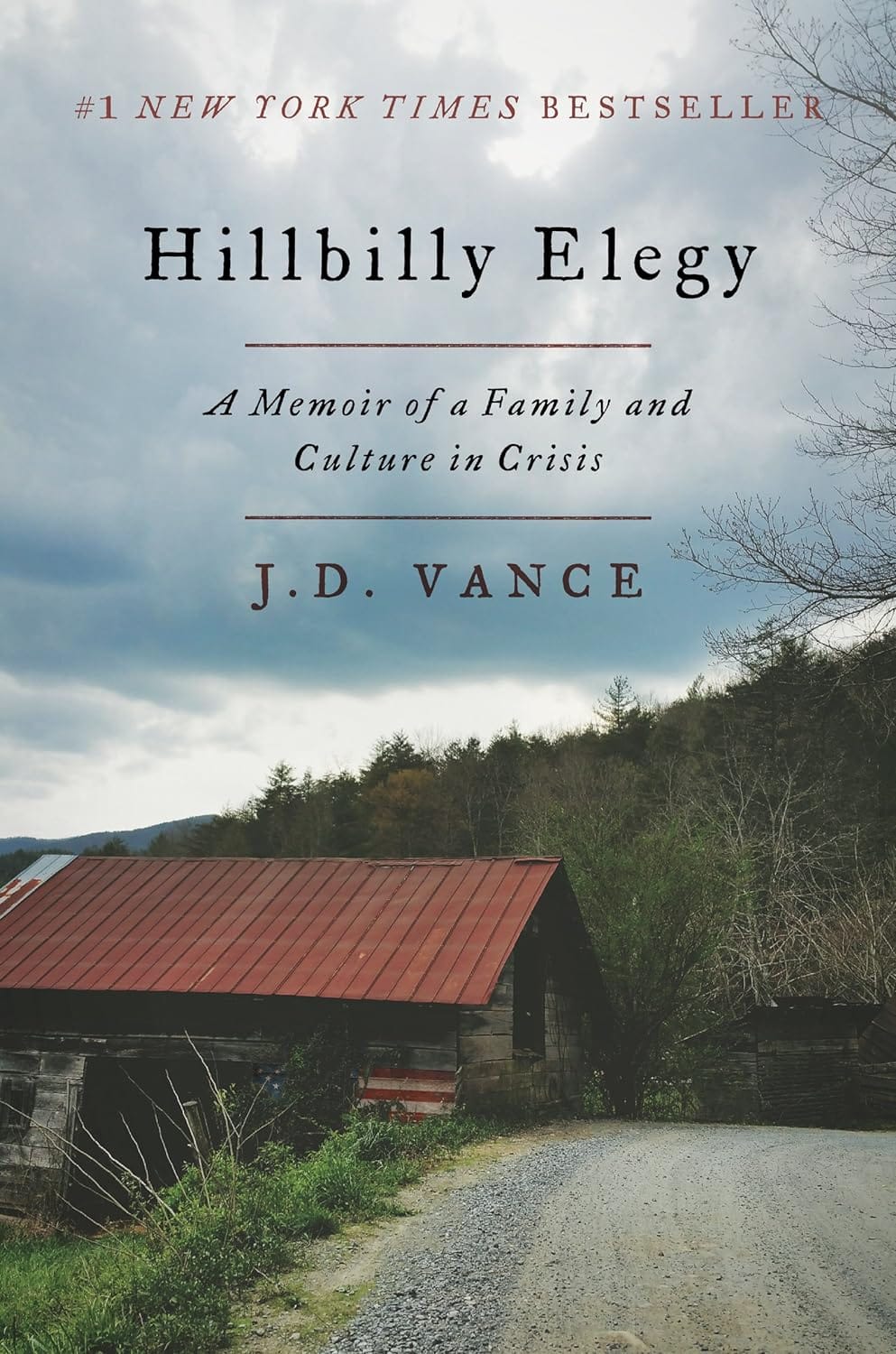
17. J.D. Vance’s book details his personal experience growing up in rural Ohio.
Hillbilly Elegy is a personal analysis of a culture in crisis. Based on his life, J.D. Vance explains what a social, regional, and class decline feels like when you are born into it. The story begins with J.D.’s grandparents moving from Kentucky to Ohio with the optimistic hopes of escaping the poverty around them. They eventually raised a middle-class family. J.D. went on to become a marine and graduate from Yale Law School. That was a monumental achievement as it signaled generational upward mobility.
However, as the novel would play out, J.D.’s grandparents, aunt, uncle, sister, and mother struggled tremendously with the demands of middle-class life. They work with escaping the legacy of abuse, alcoholism, poverty, and trauma. With sheer honesty, J.D. Vance navigates the demons of his chaotic family history. A loving memoir, Hillbilly Elegy is the story of how upward mobility feels. It brings forward the urgent and troubling reality of losing the American dream for so many in this country.
Click Here to Buy This Book!
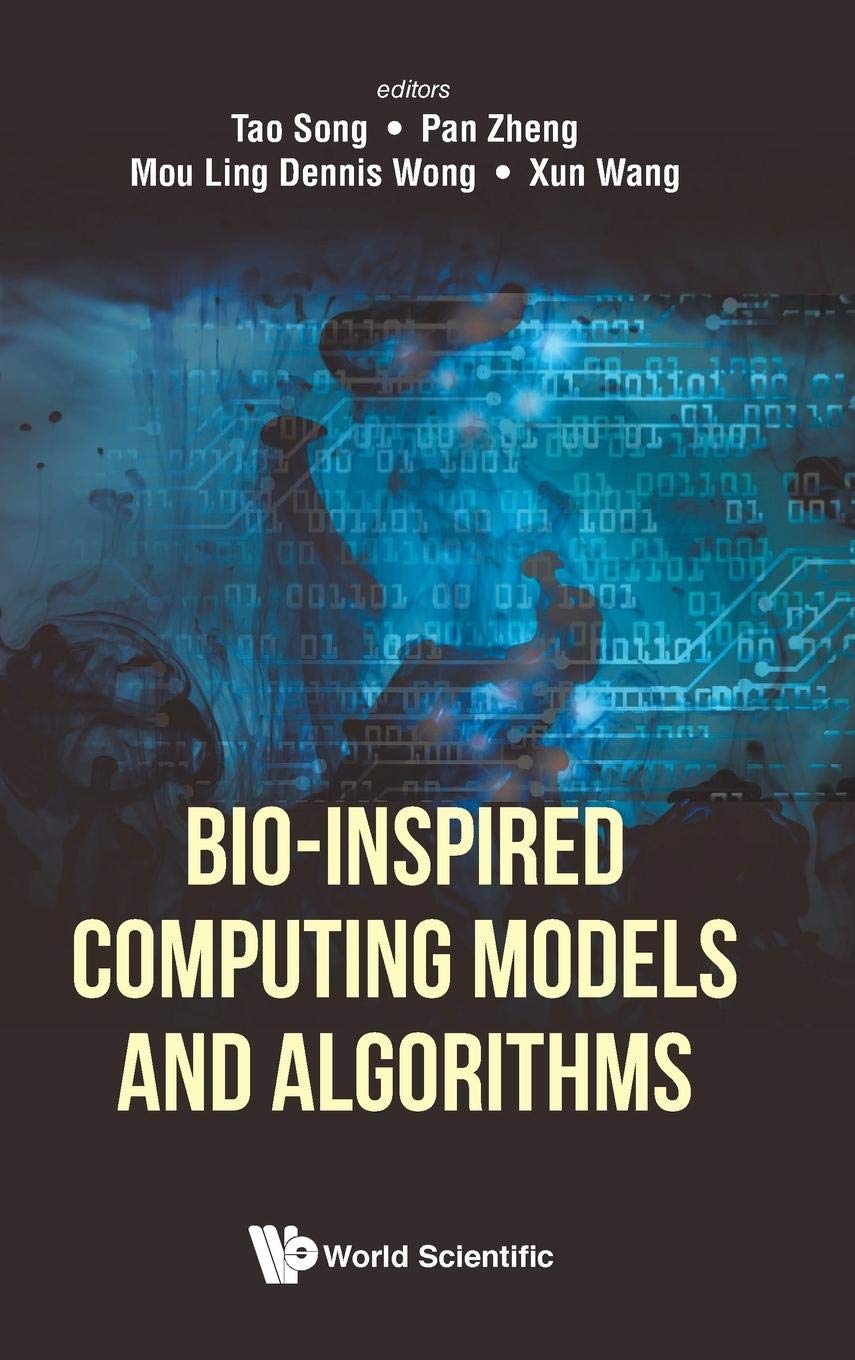
16. Bio-inspired computing (BIC) is focused on the designs and developments of computer algorithms. It also focuses on models based on biological mechanisms and living phenomena.
Bio-inspired computing is a major subfield of natural computation that leverages the recent advances in computer science, biology, and mathematics. The ideas in this book provide incredible inspiration to construct high-performance computing models. Intelligent algorithms enable positive tools to solve real-life problems. Tao Song, Pan Zheng, Mou Ling Wong, and Xun Wang wrote Bio-Inspired Computing Models and Algorithms; it covers some of BIC’s most influential topics. Newly-obtained algorithms, developments, and results are not only introduced but elaborated on.
The world-renowned authors offer potential and valuable direction to address further research. Ten chapters cover topics, including membrane systems, their computational properties, and results on computational complexity. The book has a whole chapter covering the evolutionary algorithm used for solving complex optimization problems. Chapter ten provides readers with an overview of the genetic algorithm. If you are interested in computers, algorithms, or learning your knowledge of bio-inspired computing, then this book is a must-read for you!
Click Here to Buy This Book!
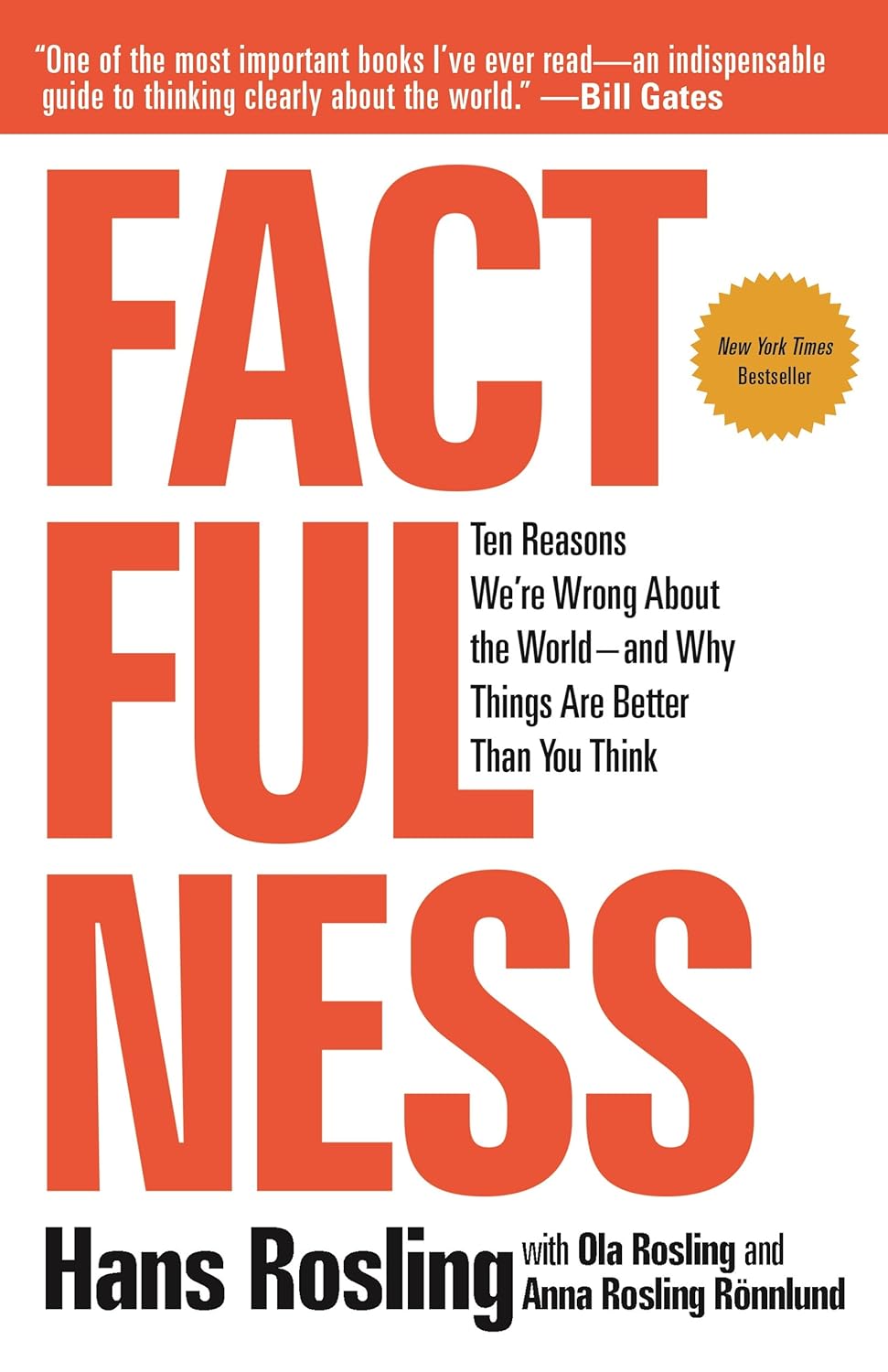
15. In Factfulness, Professor Hans Rosling elaborates on why humans only carry opinions for which they have vital supporting facts, a phenomenon called factfulness.
Along with two long-time collaborators Anna and Ola Rosling, Hans Rosling explains a new radical explanation of why this occurs. In detail, they cover the ten instincts that often distort our perspectives. That includes our tendency to divide the world into two camps. It means looking at situations with some version of them and us. Another view is the way we consume media, which is where fear rules. Thirdly, how we perceive progress; in other words, believing that most things are, in fact, getting worse.
The largest challenge is that we do not know what we don’t know, and unconscious and predictable biases merely inform even our guesses. While the world certainly has its imperfections, it is in a much better state than we might realize. That doesn’t dismiss that there are real concerns. However, when we worry about everything, rather than embracing a factual worldview, we quickly lose our ability to focus on what threatens us the most. Factfulness will help change the way you view the world and empower you to respond to crises and opportunities.
Click Here to Buy This Book!
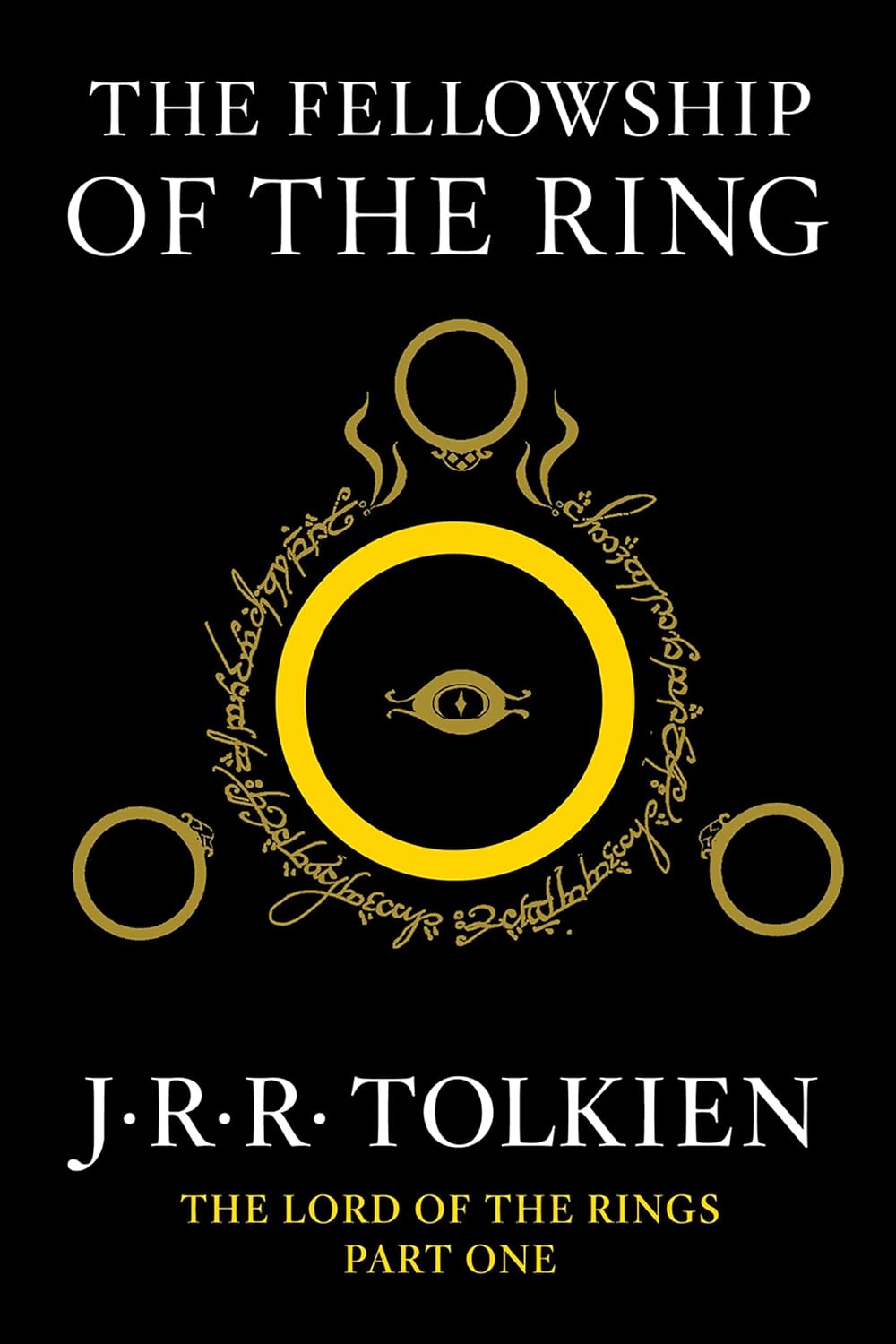
14. The Fellowship of the Ring is the first volume in J.R.R. Tolkien’s epic The Lord of the Rings.
In ancient times, Elven-smiths, and Sauron, the Dark Lord crafted the Rings of Power. Together they forged the One Ring and filled it with his own power so that they could rule all of the others. However, someone took the One Ring from him, and although he searched for it throughout Middle-earth, it remained lost to Sauron. After many ages had passed, the ring fell into the hands of Bilbo Baggins. In the sleepy village in the Shire, young Frodo Baggins finds himself faced with an incredible task.
Frodo’s elderly cousin Bilbo entrusts the ring to his care. Frodo must then leave his home and make a treacherous journey across Middle-Earth to the Cracks of Doom. Why? To destroy the ring and foil the Dark Lord, Sauron, in his evil purpose. Jane Goodall famously read the series of books to her son while she studied chimpanzees in Tanzania. Hilariously enough, Jane Goodall named one of her chimpanzees Frodo after the trilogy’s main character. Jane Goodall also mentioned that she is a massive fan of the trilogy movies in addition to the books.
Click Here to Buy This Book!
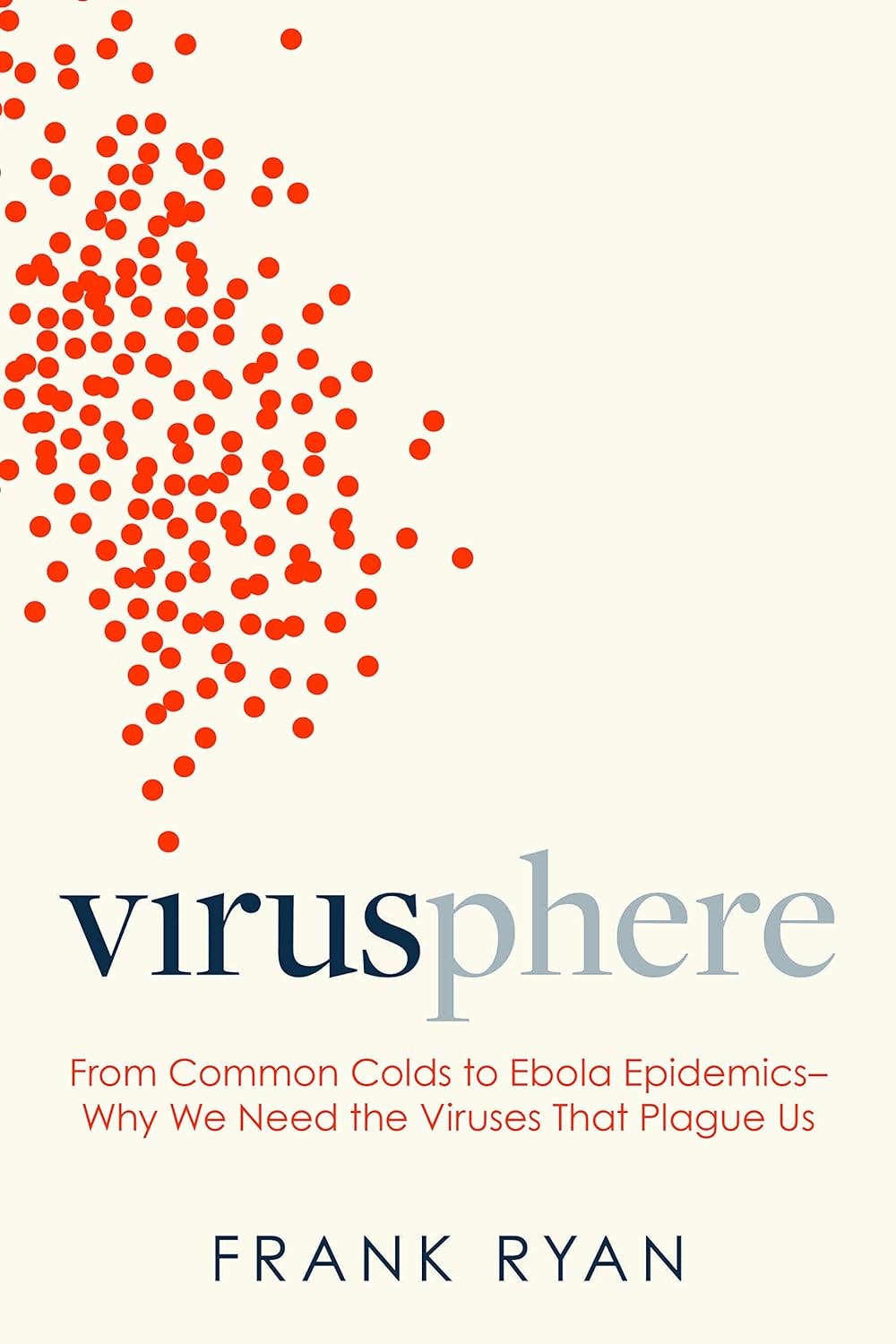
13. Virusphere is a fascinating and long-overdue examination of viruses, including what they are and what they do to the critical role they have played in human history.
There are lots of mysteries about viruses. These include questions such as what are viruses or do they rely on genes. Furthermore, people want to know if they follow the same evolution patterns as plants and animals. Frank Ryan helps answer some of these burning questions, and maybe even some you would have never thought of in his book. Dr. Ryan covers a whopping tour of illnesses that are caused by viruses. He looks at some of the more well-known diseases such as the common cold, chickenpox, measles, and mumps.
However, he also can cover less well-known illnesses, such as rabies, Ebola, and virus-induced cancers. As the reader makes their way through the pages of Virusphere, they will learn about all of the behaviors of viruses and what drives them to infect a human host. Dr. Ryan also covers the role of viruses in the evolution of life. He explains how viruses have altered humans at the most intimate level. If you are interested in viruses, from general information to their impact on humans, this will be a book you won’t want to put down.
Click Here to Buy This Book!
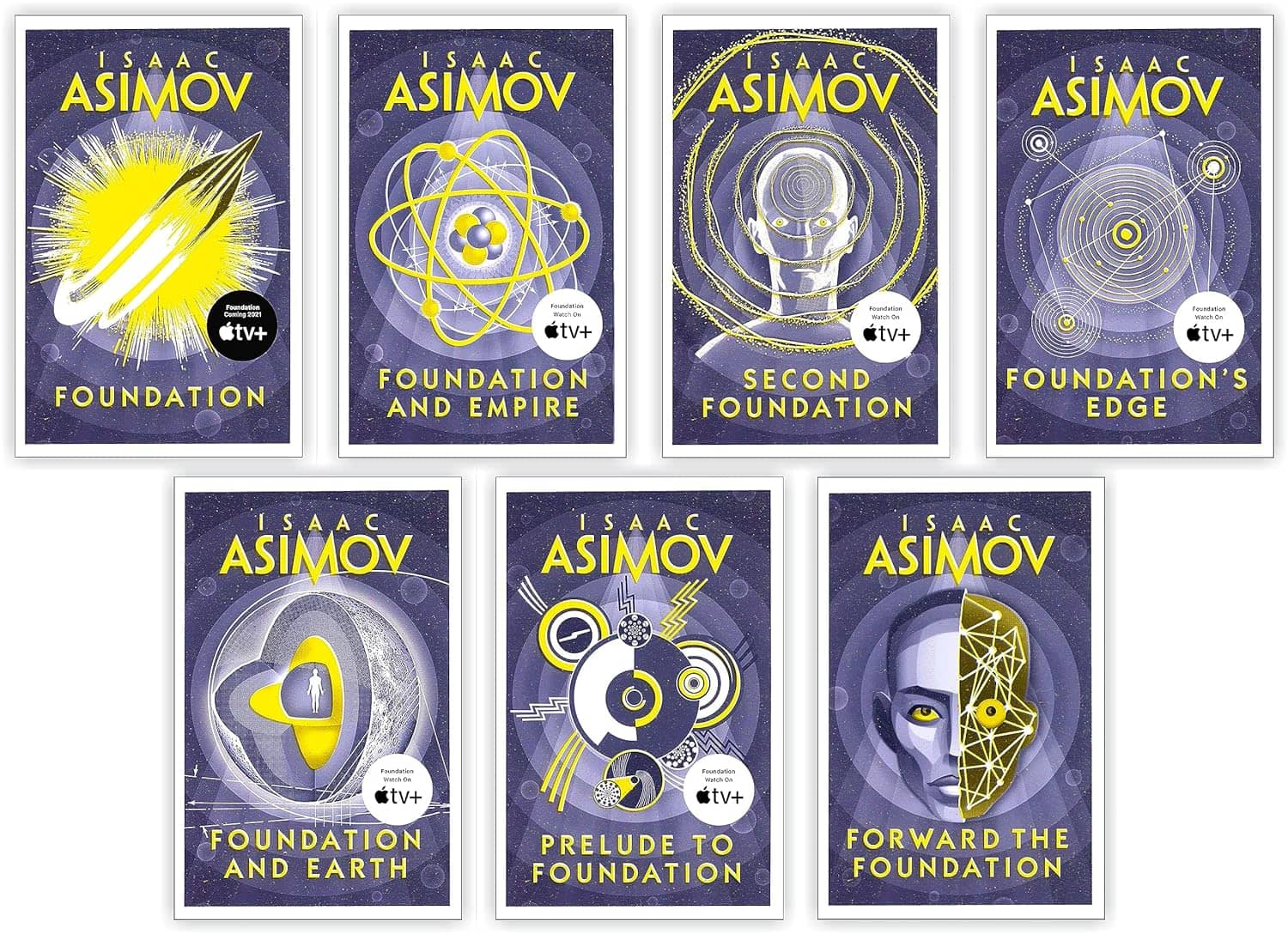
12. Isaac Asimov’s Foundation trilogy consists of three novels that experts and critics regard as a science fiction masterpiece.
Set in the future, Foundation envisions a Galactic Empire that has thrived for 12,000 years; however, it has declined into an age of barbarism. To shorten the impending new Dark Age, psycho-historian Hari Seldon convinces the Empire’s Commission of Public Safety to allow him to enact a diversionary plan. The second novel then further advances the story further into the future; technologically advanced Foundation triumphs over the attacking forces of the collapsing Empire. Even as the Foundation emerges valiantly, there is a powerful mutant whose existence was never accounted.
What does that mean? It appeared to overwhelm the Foundation and establish his own tyrannical version of the Empire. The third and final novel creates a Second Foundation. However, the whereabouts have been kept secret from the original Foundation. It’s for safety’s sake, but allows it to assert itself as the true fulfillment of Seldon’s plans for the Empire. In turn, pitting itself against a Foundation resentful of its authority. If you’re intrigued by science fiction, this series of novels offer you to go into a distant realm.
Click Here to Buy This Book!
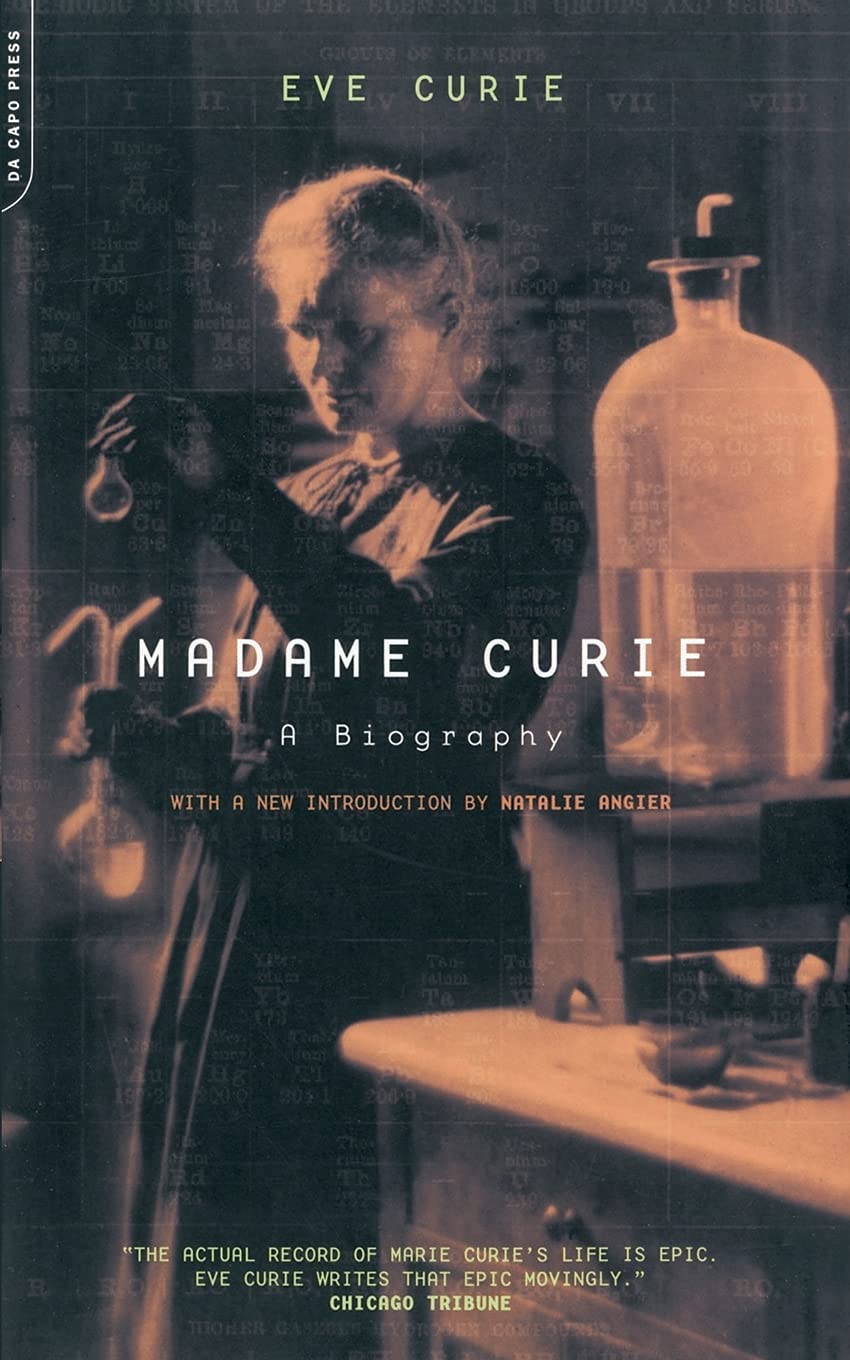
11. Madame Curie was the first woman scientist to win worldwide acclaim. Her life story was full of highs and lows, but it all makes for one astonishing tale.
One of the most outstanding scientists of the twentieth century is Madame Curie. People also know her as Marie Sklodowska Curie. She had a passion for scientific inquiry. Curie was famous for her investigations into radioactivity and the discovery of the elements polonium and radium. The renowned international activist Eve Curie wrote the book; it chronicles Curie’s legendary scientific achievements. This timeline includes her pioneer efforts in the study of radioactivity and her two Nobel Prizes in Physics and Chemistry.
The book also focuses on Madame Curie’s incredible life. From her childhood in Poland to her storybook Parisian marriage to fellow scientist Pierre Curie, her daughter documents her story. Tragically, Madame Curie had a very tragic death from the same radium that brought her fame. Her daughter, Eve Curie, was a French and American pianist, journalist, and diplomat. Her Madame Curie biography earned her a Nobel Prize just like her mother and father. Eve had the unique opportunity to share her mother’s story with the world; furthermore, people can retell it for years to come now.
Click Here to Buy This Book!
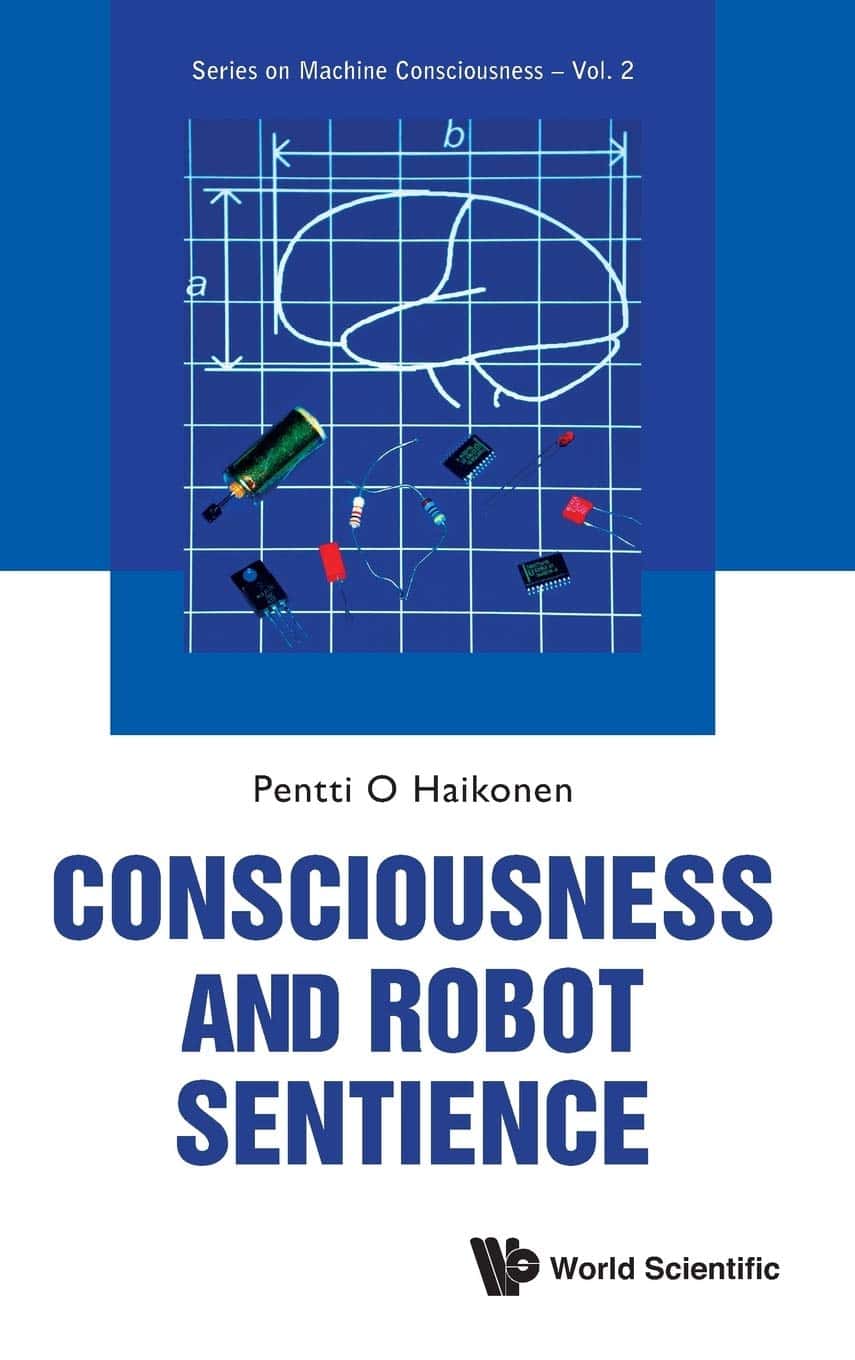
10. Robots are becoming more human. However, could they also become sentient and have human-like consciousness?
The first question that people might ask themselves: what is consciousness? It is a fact that our thoughts and consciousness are based on the neural activity of the brain. Instead, how we perceive sensations and ideas as they are. People often ask what kind of condition would transform the neural activity into this kind of internal appearance. This concept is the fundamental problem of consciousness. Pentti Haikonen offers an explanation that also provides preconditions for valid conscious cognition. It includes the requirement of a direct perceptive system with inherent sub-symbolic and symbolic information processing.
The associative neural information processing with distributed signal representations is introduced as a possible method that satisfies those requirements. Conscious robot cognition also requires information integration and sensorimotor integration. This book helps present philosophical issues of consciousness and the practical engineering of conscious robots in an easy-to-understand manner. Anyone in this field, including students, researchers, philosophers, and engineers, can benefit from reading this book and theories. Readers can not only expand on their ideas and knowledge but become open and familiar with new views.
Click Here to Buy This Book!

9. The Republic is a Socratic dialogue that was written by Plato around 380 BC. It focuses on the concern of the definition of justice and the order and character or just city-state and the just man.
Plato’s book evaluates the differing concepts of justice and morality. People vigorously debate the dramatic date of the dialogue. The Republic is Plato’s best-known work and has proven to be one of the most intellectually and historically influential books of philosophy and political theory. Plato held many hats. Plato was a Classical Greek philosopher; people describe him as a mathematician, writer of philosophical dialogues. Socrates was his teacher. However, Plato created the Academy in Athens, which was the first institution of higher learning in the Western World.
In The Republic, Plato strives to define justice and define it to show justice is worthwhile. His strategy is the first to explicate the primary notion of social justice and derive a concept of individual justice. In an ideal society, Plato identifies three main classes of people – producers, auxiliaries, and guardians. Rulers must rule, auxiliaries must uphold rulers’ convictions, and producers must limit themselves to exercising whatever skills creation granted them. Justice is a specialization principle that requires each person to fill the societal role to which nature fits him and not interfere with any other business. Towards the end of the book, Plato tries to demonstrate that individual justice mirrors political justice.
Click Here to Buy This Book!
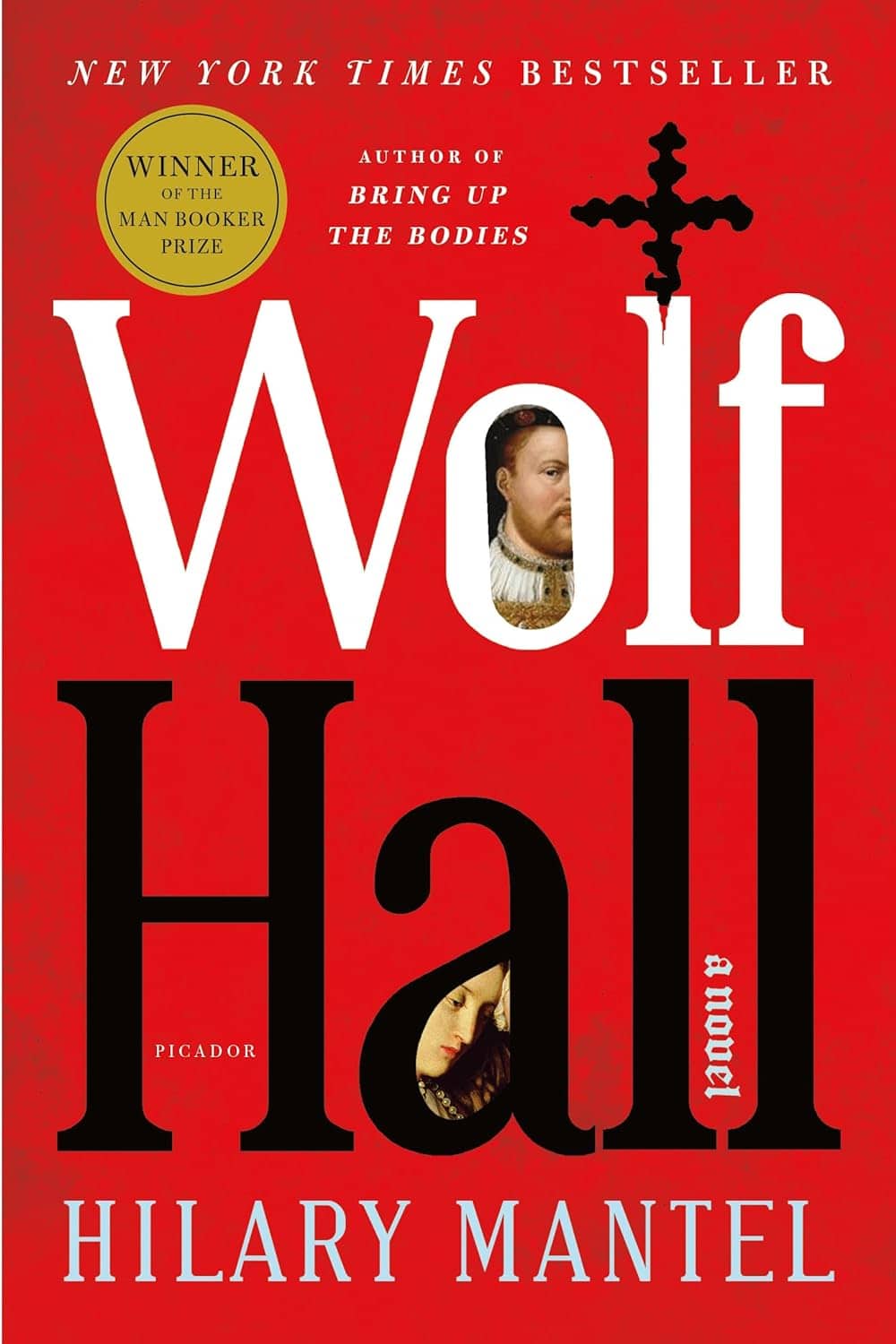
8. Wolf Hall takes place in England during the 1520s and depicts the life of King Henry VIII. Hall tells the story from the perspective of Thomas Cromwell, one of the king’s most trusted advisors.
This author provides a different perspective on Thomas Cromwell; researchers often depict him as calculating and power-hungry. Thomas is the son of Walter, an abusive, drunk blacksmith. After being viciously beaten, a young Thomas escapes his father’s wrath by running away to the continent to seek his fortunes. He becomes a soldier, merchant, and lawyer. Throughout his life, this infamous man develops linguistic and business skills. Ultimately he returns to England and begins to establish his fortune. He gets married and has three children.
Due to his knowledge in business and law, Thomas makes his way into the employment of Cardinal Wolsey, the Lord Chancellor to King Henry VIII. The king assigns Wosley the task of arranging his divorce, which he ultimately fails to do. Thomas’s loyalty to Wolsey is appealing to the king, and after Wosley’s death, Thomas’s fortune rises. He continues to become closer to King Henry. Wolf Hall earned the prestigious Man Booker prize in 2009 and again in 2012. The three installments of the book allow you to keep reading as each chapter ends. This historical fiction is sure to keep you engaged and entertained.
Click Here to Buy This Book!
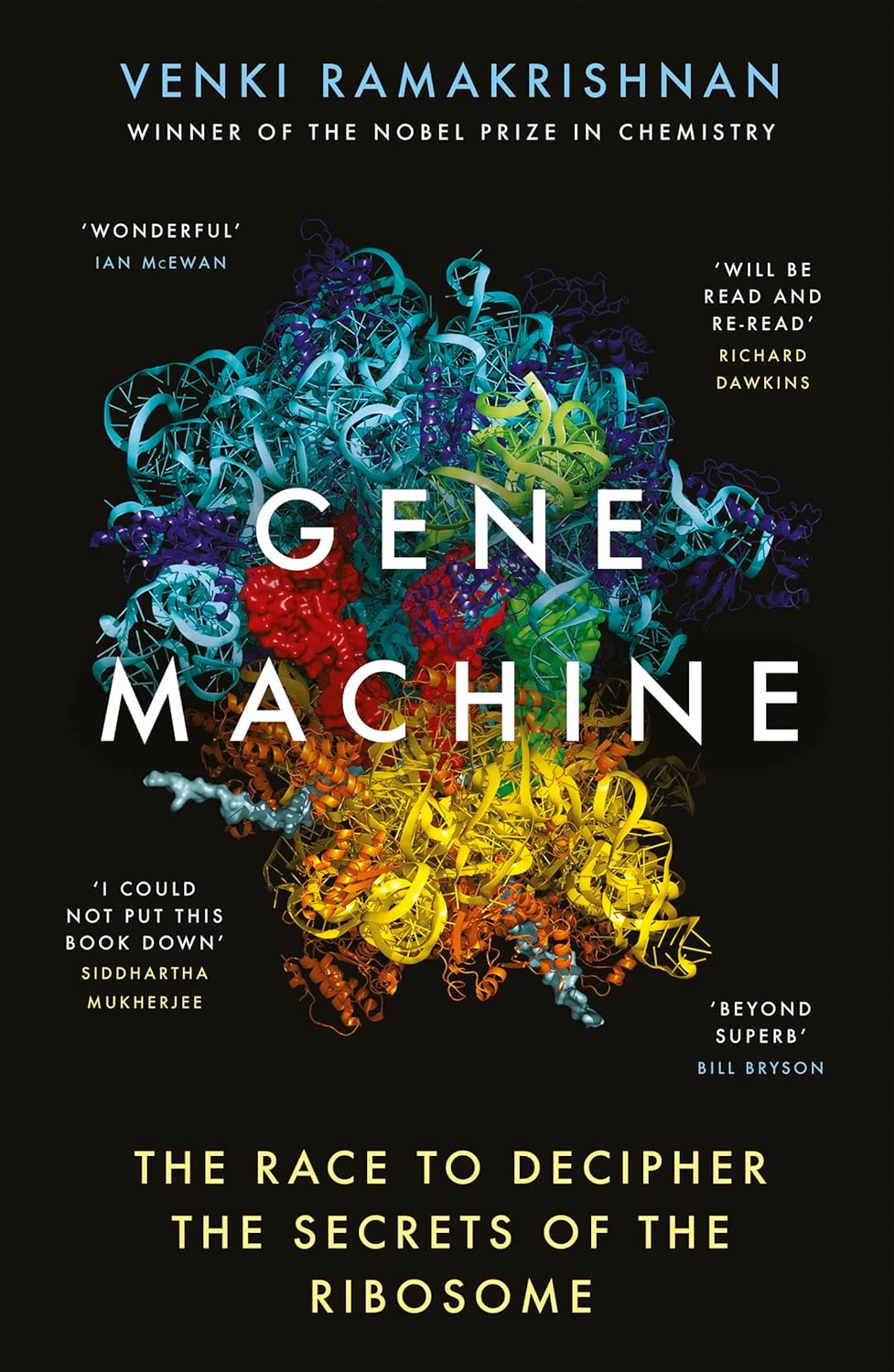
7. Gene Machine narrates Ramarkrishnan’s journey from his initial encounters in a biology lab to being at the center of a competition with the cutting edge of modern science.
Everyone has heard of DNA. However, by itself, DNA is just a blueprint for life. By the late 1970s, scientists already figured out the structure of DNA. However, the quest to understand how the ribosome converts genetic information into proteins was still very much in the beginning stages. The ribosome is an enormous molecule machine with million atoms. The ribosomes are what makes the DNA come to life. They turn each individual’s genetic code into proteins and, therefore, into who we are.
Gene Machine offers an insider look at the race for the ribosome’s structure. This crucial discovery will advance our knowledge of all life and lead to better antibiotics against life-threatening diseases. This book documents Ramarkrishnan’s uncanny journey. His writing is both candid and engaging. The author wrote it for readers to enjoy. It is for both scientists and non-scientists alike due to the balance of details and accessible explanations. Ramakrishnan, along with two others, would share the Nobel Prize in chemistry in 2009 for their work on the ribosome.
Click Here to Buy This Book!
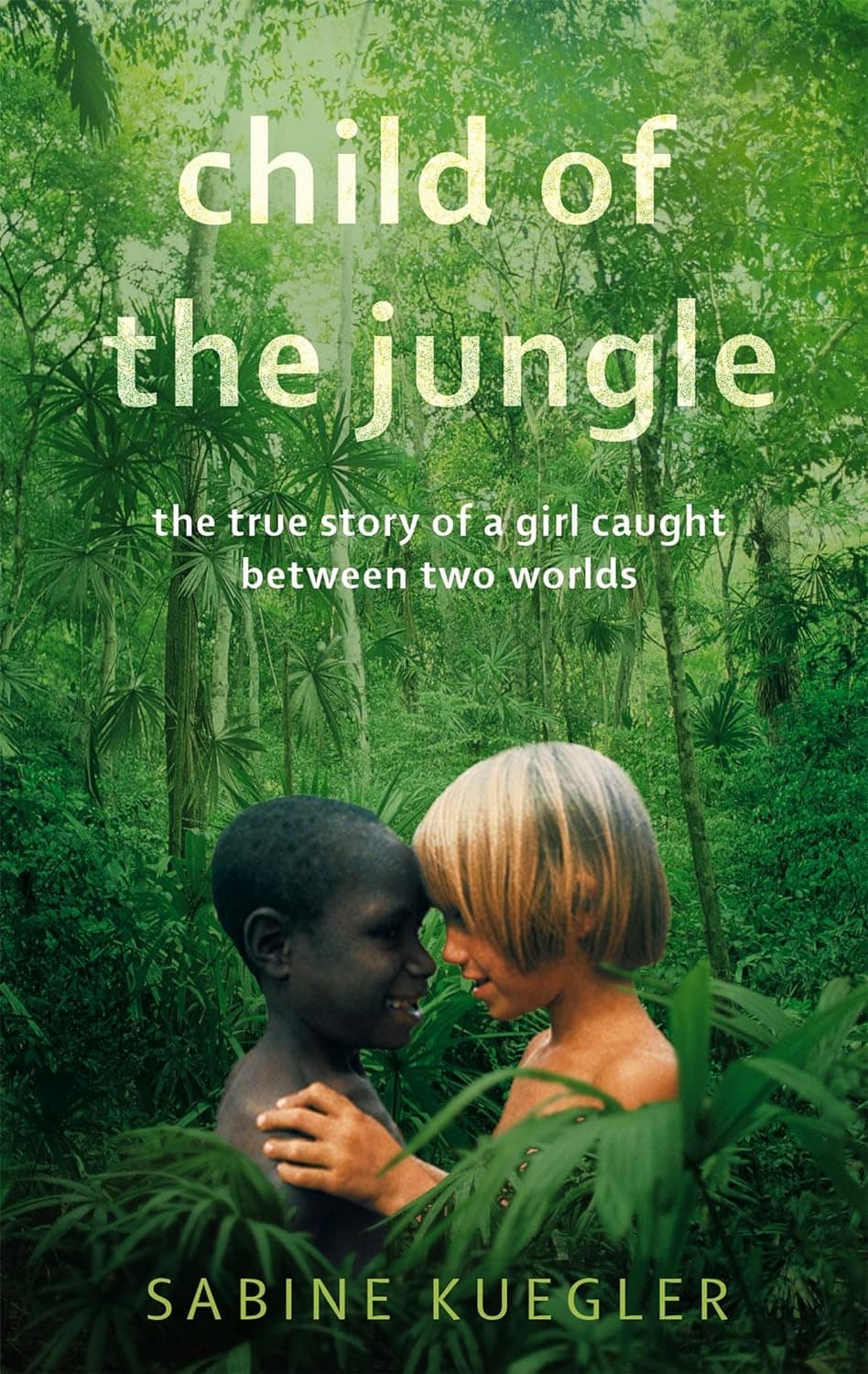
6. In 1980, seven-year-old Sabine Kuegler and her family lived in a remote jungle area of West Papua. Child of the Jungle narrates her transition into a new, unknown lifestyle.
Child of the Jungle is a number one bestseller in Europe because it focuses on the remarkable story of a youth spent caught between two modes of existence – jungle life and Western civilization. As a child, Sabine Kuegler lived among the recently discovered Fayu, a tribe that has been untouched by modern society. Once Sabine’s family was accepted by a clan chief, they quickly became part of a tightly-knit and incredibly loyal community. She would spend hours of her childhood hunting, shooting poisonous spiders with arrows, and chewing on bat-wing pieces to replace gum.
The Fayu tribe live an existence characterized by fear, violence, and atavistic ritual. Following the passing of her Fayu-brother, Ohri, Sabine decided to leave the jungle. Now seventeen, she decides to go to a boarding school in Switzerland. That is an incredibly drastic change for a girl who acts and feels like one of the Fayu. Her autobiography narrates the difference she felt, leaving the only home she had ever known, the forest, to attend boarding school in Europe.
Click Here to Buy This Book!
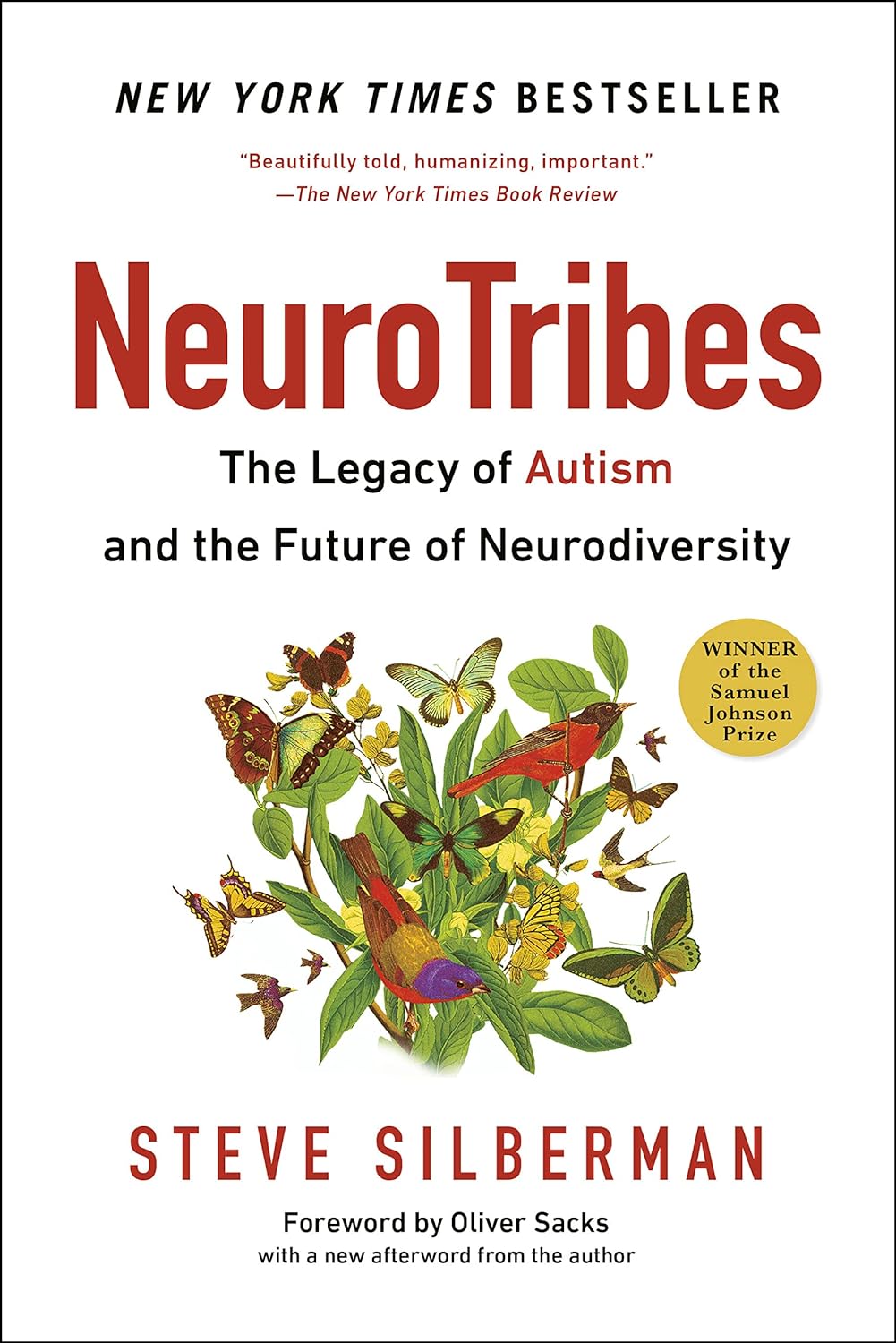
5. Steve Silberman explains what autism is and how society can help create a more inclusive, accepting environment.
People describe autism in a variety of ways. Most view it as a developmental disorder, a disability, or a cognitive difference to certain forms of genius. One thing people do know is that the future of our society depends on our understanding of it. Steve Silberman helps unearth the secret history of autism, including how clinicians suppressed it for so long — the same ones who became famous for discovering it. He also helps to map out a path for our society in which we create a more humane world for those with learning differences. That includes their loved ones having access to resources they need to live a happier, healthier, more secure, and meaningful life.
Throughout his book, Steve Silberman helps tell the untold story of Hans Asperger, the father of Asperger’s syndrome. He investigates the concept of neurodiversity and considers the notion that neurological scenarios such as autism are not errors of nature or consequences of a modern toxic world. Instead, they are products of natural variations in the human genome. His goal is to help reshape our understanding of the meaning, history, and implications of biodiversity.
Click Here to Buy This Book!

4. Misha Vanburg is an obese, secular Jew and is the son of the 1,238th richest man in Russia.
At the beginning of Absurdistan, Misha is at the end of a long journey. This journey began when he returned to Russia from New York. He dreams of returning to New York to be in the city that he loves and be with the woman he loves. His quest to return to New York ultimately takes him to Absurdistan, a country near the Caspian Sea. Misha is unable to return to New York because his papa, Boris Vainberg, was a Russian gangster. After Boris killed a man in Oklahoma, they refused to give Misha any further visas.
Salvation can only exist in the tiny, oil-rich nation of Absurdistan. There, a crooked consular officer will sell Misha a Belgian passport. However, after civil war breaks out between the two competing ethnic groups, a local warlord installs Misha as minister of multicultural affairs. The reader will soon find him fighting for his life, falling in love, and trying to figure out if an ordinary life is still an option in the twenty-first century. Absurdistan is a complex, political novel with a rich commentary on a diverse set of issues.
Click Here to Buy This Book!
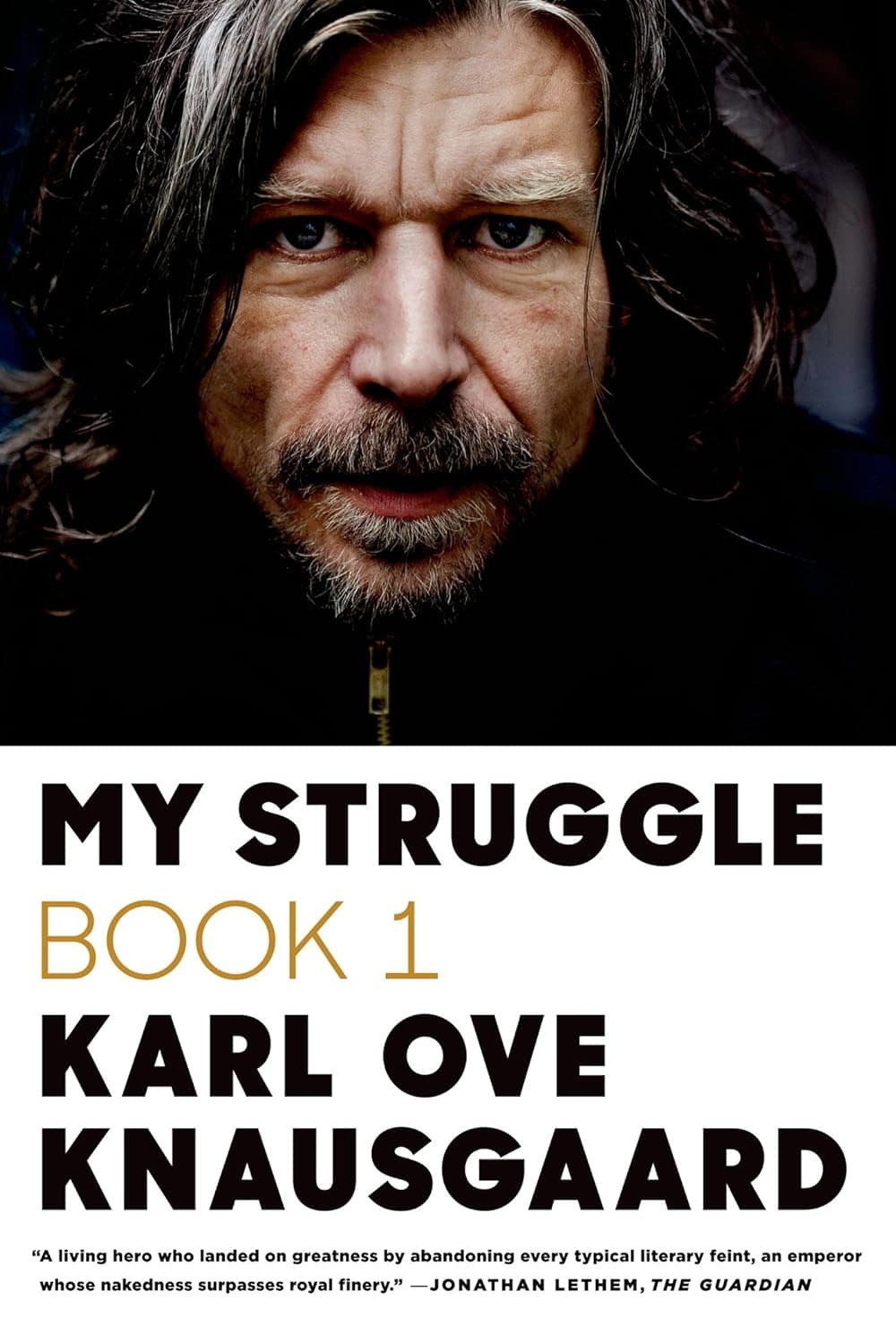
3. In this autobiography, Karl Knausgaard breaks down his own life story into six pieces.
Almost ten years after Karl’s father drank himself to death, he embarked on a new journey, writing an autobiography detailing his path in life. Although vulnerable and full of doubts, Karl breaks down chapters of his life in immense detail so the reader can truly feel that they are experiencing his path with him. In his book, he breaks down his life into particles, reliving memories, reopening wounds, and examining his own life. That includes the breakthroughs that emerged as a result of his own experience as a father.
He talks about the fallout in the wake of his father’s death and his incredible connection to music, art, and literature. Karl Knausgaard’s dilemmas strike nerves in the readers due to the raw glimpses into his life as we witness what happens to a young man’s sensitive mind. Karl works to find his place in the chaotic world around him as if his life indeed depended on it. This masterpiece opens a window into one of the most original minds of writing. The reviews rave about Karl’s honesty and critical attention to detail. One study went as far as to acknowledge Karl’s job at finding the inner core of human existence.
Click Here to Buy This Book!
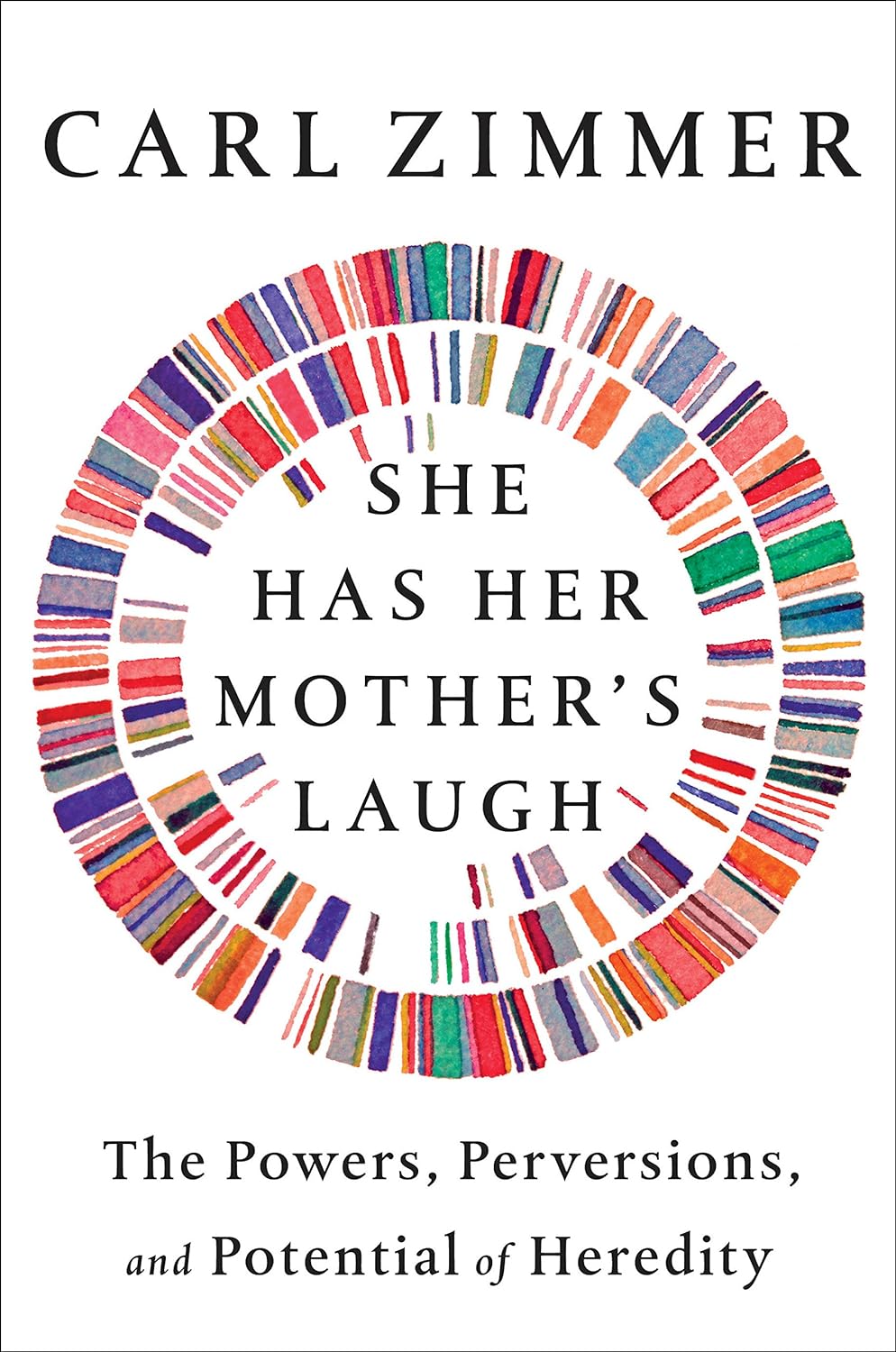
2. Carl Zimmer is an award-winning New York Times columnist. In She Has Her Mother’s Laugh, he presents a history of our understanding of heredity in the overview of a force that shaped human society.
She Has Her Mother’s Laugh presents readers with a profound original perspective on what we pass along from generation to generation. Charles Darwin played an essential role in turning heredity into a scientific question; however, he struggled to answer it. Luckily, the birth of genetics in the early 1900s helped people to gradually translate their notion about heredity into a language of genes. Heredity is just about genes that pass from parent to child. It continues within our own bodies, as a single, individual cell gives rise to trillions of cells that make up our bodies.
It’s common to say that we inherit genes from our ancestors. In fact, we inherit other things that matter as much or more to our lives, from microbes to technologies that we use to make life more comfortable. Carl Zimmer works to deliver a new definition of what heredity is. Intertwining historical and current scientific research with his two daughters’ experience, Zimmer unleashes urgent bioethical difficulties. These arise from new biomedical technologies and long-standing presumptions about who we are and what we can pass on to future generations.
Click Here to Buy This Book!
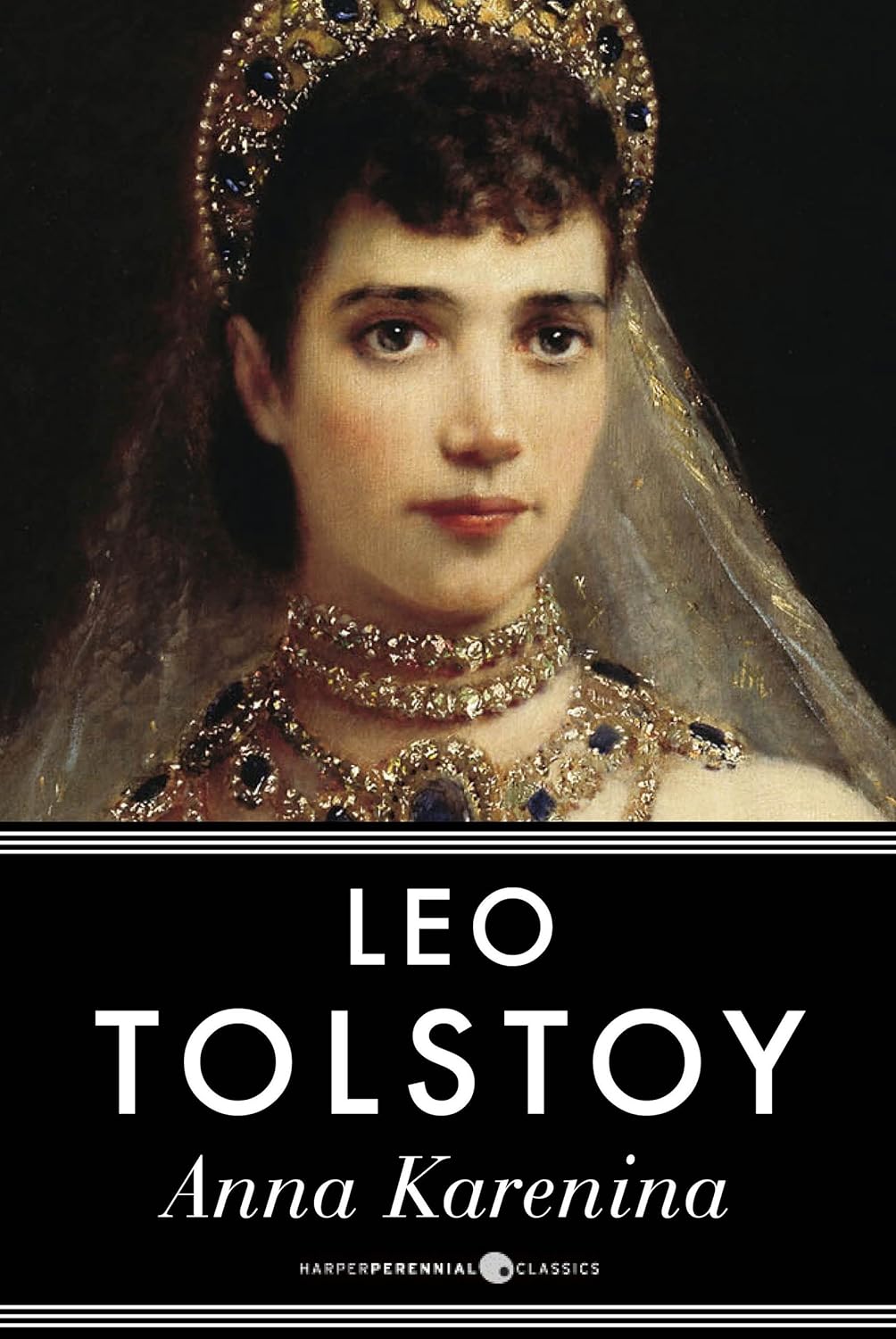
1. Dolly Oblonskaya caught her husband, Stiva, having an affair with their children’s former governess and threatened to leave him. Through some challenging efforts, Stilva and Dolly face reconciliation.
Once caught, Stiva is slightly remorseful but mostly dazed and not comprehending what they say to her. Anna Karenina is Stiva’s sister who arrives and helps the Oblonskys’ meditate. At the same time, Dolly’s younger sister, Kitty, is courted by two suitors. After turning down Alexei Vronsky, a military man, he meets Anna and falls in love with her. Anna returns to St. Petersburg while reflecting on Vronsky’s infatuation but is quick to dismiss it as nothing more than a crush once arriving home.
Vronsky follows Anna to St. Petersburg, and their mutual attraction intensifies. The dozens of characters in Anna Karenina work to portray Russian society’s realistic account during this time. The story was published in installments between 1875 and 1877 and is considered one of world literature’s pinnacles. The tragic fate that follows the love affair of Anna and Vronsky is inevitable. Anna doesn’t pay because she transgresses the moral code but refuses to observe the properties customarily enacted by the hypocritical high society to which she belongs.
Click Here to Buy This Book!

